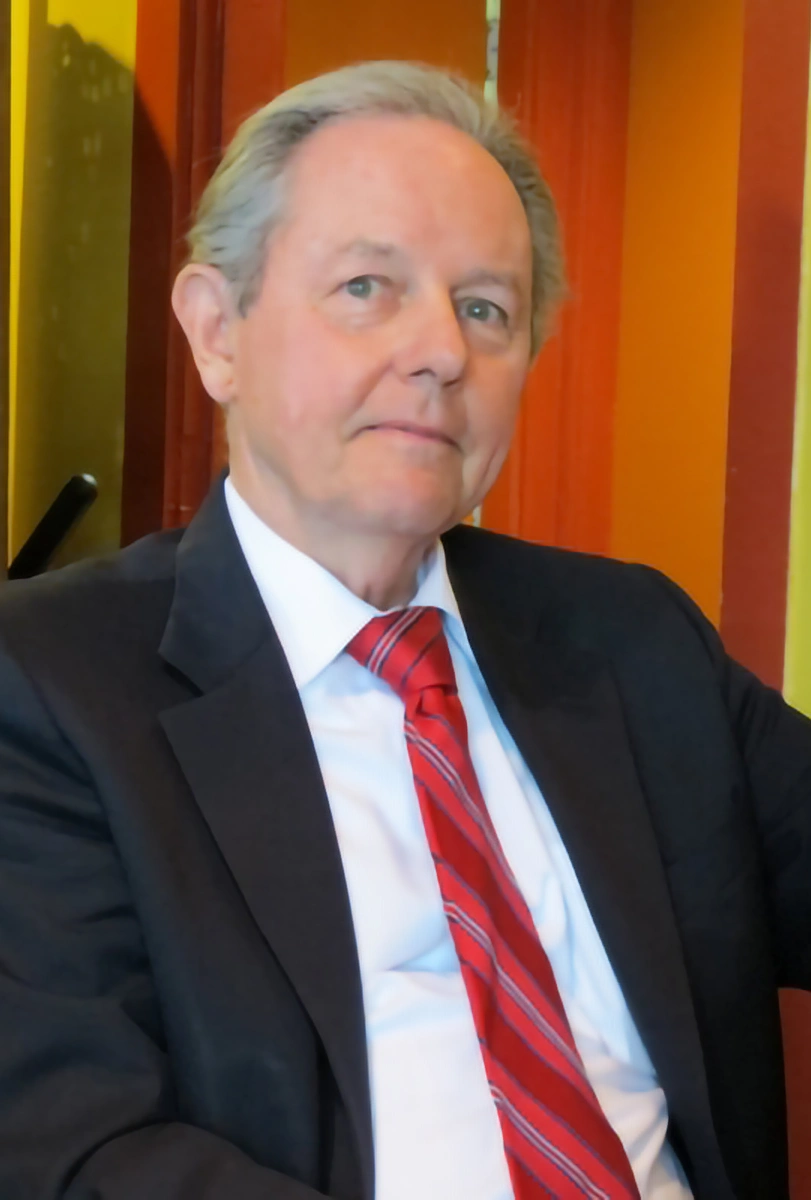George W. Kabalka

ADDRESS
Phone
George W. Kabalka
Professor Emeritus
Dr. Kabalka earned a B.S. degree in chemistry from the University of Michigan in 1965. His graduate studies were conducted at Purdue University under the guidance of Professor Herbert C. Brown and he received the Ph.D. degree in 1970. Dr. Kabalka joined the chemistry faculty at Tennessee in 1970.
Dr. Kabalka also serves as Director of Basic Research for the UT Biomedical Imaging Center of the Graduate School of Medicine. Professor Kabalka is a consultant to Oak Ridge National Laboratory, Brookhaven National Laboratory, and Oak Ridge Associated Universities.
Education
B.S., University of Michigan (1965)
Ph.D., Purdue University (1970)
Research
Our research efforts are focused on developing new synthetic methods. We utilize organometallic reagents extensively and have a continuing interest in organoborane chemistry. A special emphasis is placed on reactions which can be utilized to incorporate short-lived, positron emitting isotopes of use in modern medical imaging techniques such as positron emission tomography (PET). In recent years we have developed new, rapid synthetic routes to complex organic molecules containing nitrogen-13 (t1/2=10 minutes) and oxygen-15 (t1/2=2 minutes) which are physiologically active. We are currently examining new methods for incorporating carbon-11 (t1/2=20 minutes) using organoborane reactions involving carbon monoxide as outlined in this reaction scheme.
In many instances, the boron compounds are of interest in their own right. For example, para-boronophenylalanine (BPA) is currently being evaluated as an agent for destroying tumors in a technique known as boron neutron capture therapy (BNCT). We are preparing the carbon-11 labeled analog for potential use in screening BNCT agents prior to treatment.
We are also interested in the development of physiologically active agents containing NMR active nuclei for use in magnetic resonance imaging (MRI). Agents containing carbon-13, fluorine-19, and boron-10 (for BNCT) are being synthesized and evaluated in our laboratories. Agents containing metal ions such as gadolinium are also of interest due to their effect on the relaxation rates of neighboring hydrogen nuclei; our research efforts have been directed at gadolinium analogs of agents such as fatty acids and steroids which are known to accumulate in heart muscle and certain tumors. My research group collaborates extensively with neighboring hospital-based research groups and the national laboratories. This collaboration offers my students an opportunity to carry out a portion of their graduate studies in non-traditional settings.
Awards
AAAS Fellow
Selected Publications
Coltuclu V.; Dadush, E.; Naravane, A.; Kabalka, G.W.; “Microwave-enhanced Cross-coupling Reactions Involving Alkynyltrifluoroborates with Aryl Bromides.” Molecules, 2013, 18, 1755-61.
Musolino, B.; Quinn, M.; Hall, K.; Kabalka, G.W “Ultrasound Induced, Copper Mediated Homo-Coupling Using Polymer Supported Aryltrifluoroborates” Tetrahedron Letters, 2013, 54, 4080–4082.
Marepally, S. R.; Yao, M.-L.; Kabalka, G. W. “Boronated Carbohydrate Derivatives as Potential Boron Neutron Capture Therapy Reagents.” Future Med. Chem. 2013, 5, 693-704.
Chandra, S.; Barth, R. F.; Haider, S. A.; Yang, W.; Huo, T.; Shaikh, A. L.; Kabalka, G. W. “Biodistribution and Subcellular Localization of an Unnatural Boron-Containing Amino Acid (Cis-ABCPC) by Imaging Secondary Ion Mass Spectrometry for Neutron Capture Therapy of Melanomas and Gliomas.” PLoS One, 2013, 8, e75377.
Yang, W.; Barth, R. F.; Huo, T.; Kabalka, G. W.; S., Aarif L.; Haider, S. A.; Chandra, S. “Effects of L-DOPA Pre-loading on the Uptake of Boronophenylalanine using the F98 Glioma and B16 Melanoma Models.” App. Radiat. Isot. 2014, 88, 69-73.
Chandra, S.; Ahmad, T.; Barth, R. F.; Kabalka, G. W. “Quantitative Evaluation of Boron Neutron Capture Therapy (BNCT) Drugs for Boron Delivery and Retention at Subcellular-scale Resolution in Human Glioblastoma Cells with Imaging Secondary Ion Mass Spectrometry (SIMS)” J.Microscopy 2014, 254, 146-156.
Barth, R. F.; Kabalka, G. W.; Yang, W.; Huo, T.; Nakkula, R. J.; Shaikh, A. L.; Haider, S. A.; Chandra, S. “Evaluation of Unnatural Cyclic Amino Acids as Boron Delivery Agents for Treatment of Melanomas and Gliomas”, App. Rad. Isotopes 2014, 88, 38-42.
Yong, L.; Yao, M.-L.; Blevins, D. W.; Kabalka, G. W. “Synthesis of PEG-supported Organotrifluoroborates and their Applications in Palladium-catalyzed Homo-coupling Reactions”, Dalton Trans. 2015, 44, 4759-4764.
Blevins, D. W.; Yao, M.-L.; Yong, L.; Kabalka, G. W. “Iododemetallation of Potassium Organotrifluoroborates and Tributylarylstannanes using Sodium Iodide/iron(III) Chloride”, Tet. Lett. 2015, 56, 3130-3132.